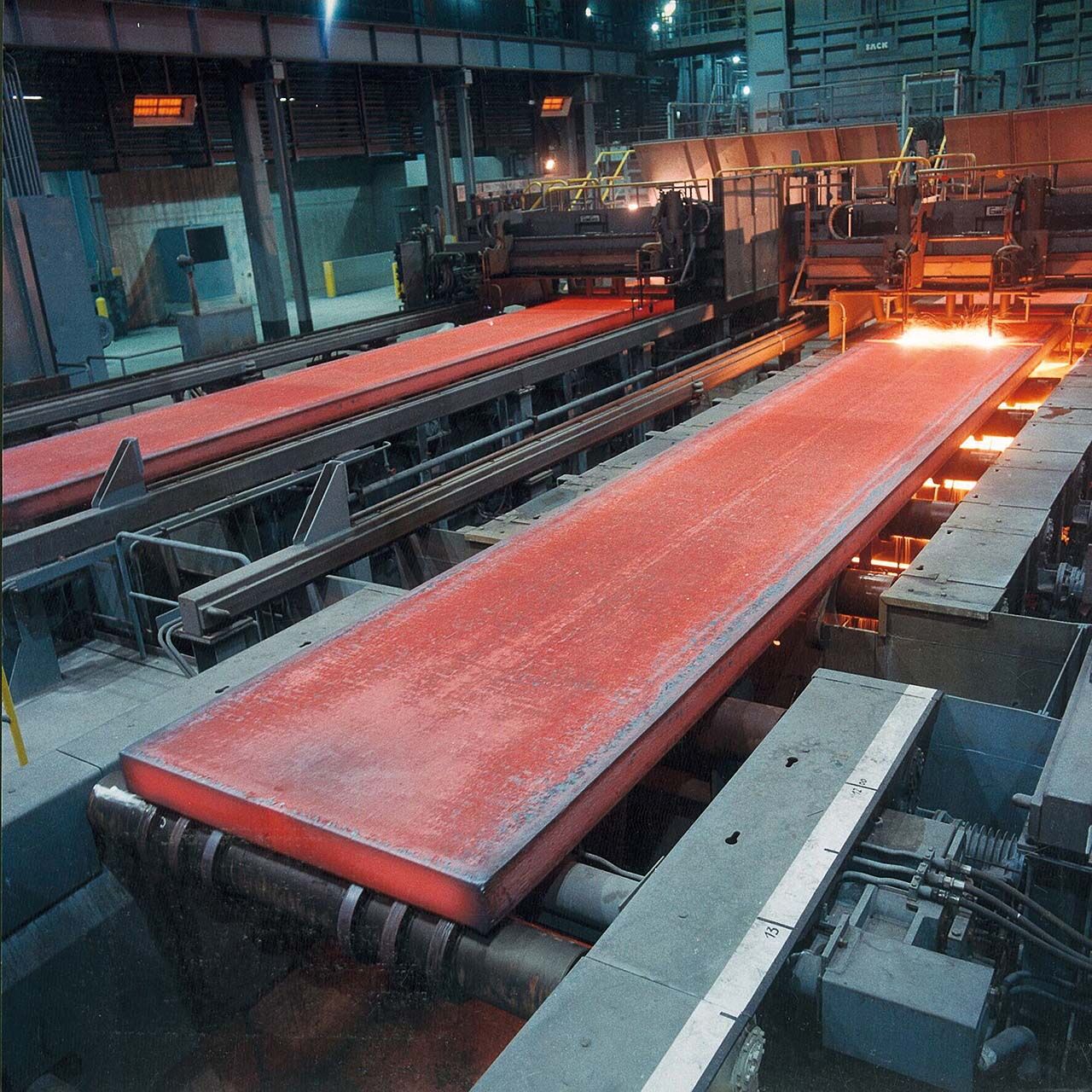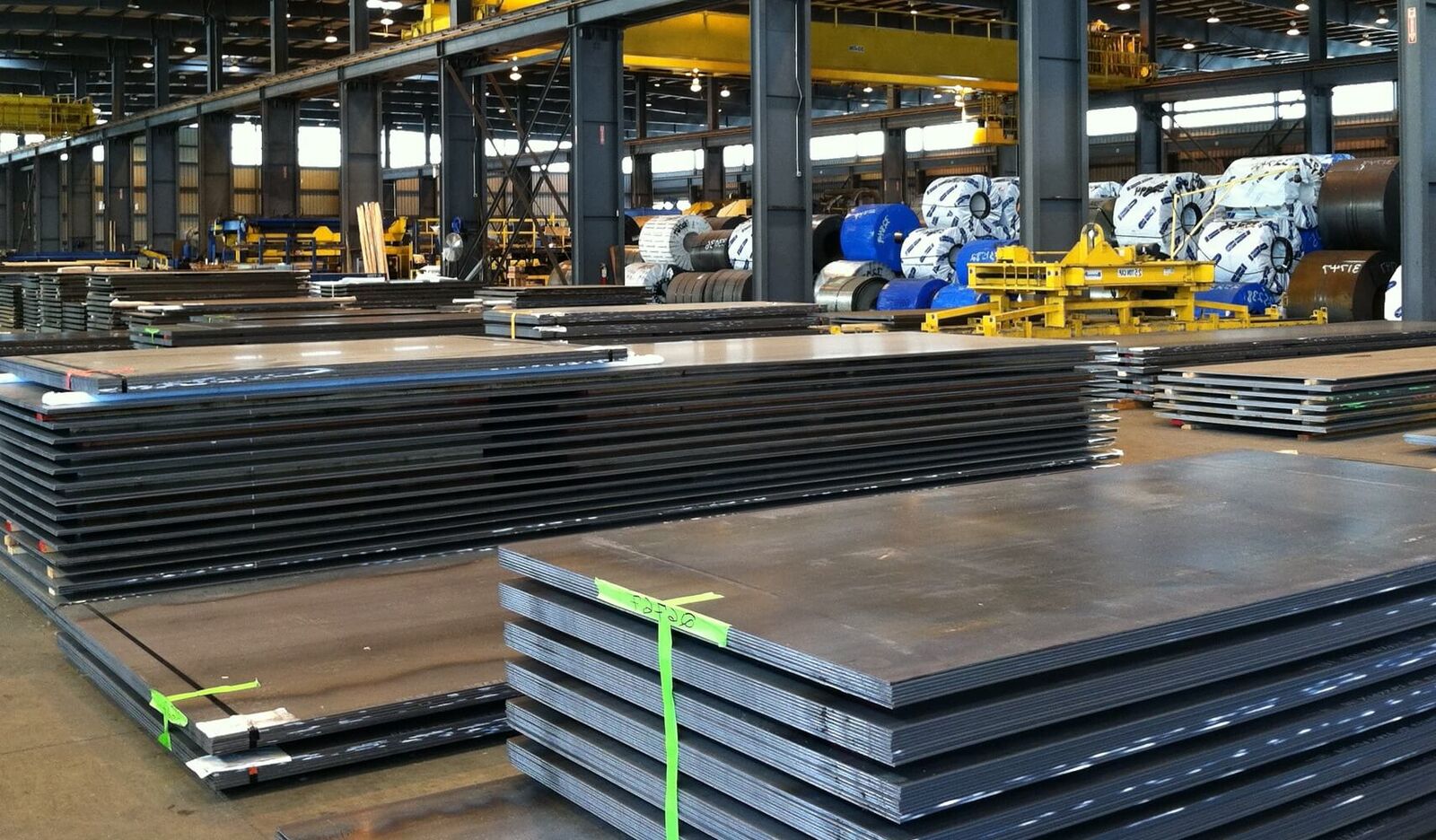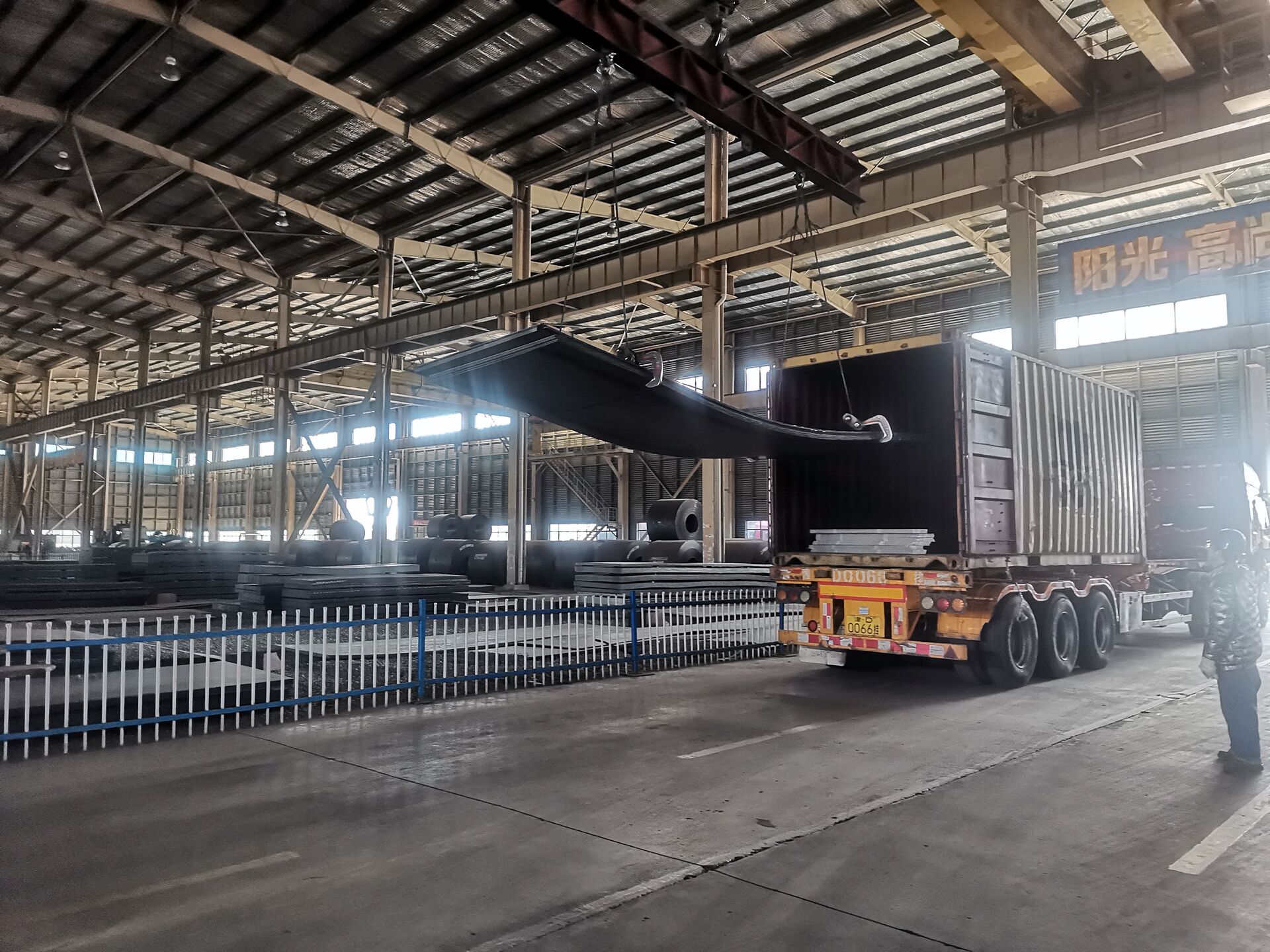PRODUCTS
PRODUCTS
HOT PRODUCTS
If You Need Any Help Contact With Us
Can't find what you're looking for ?
Leave a Message we will call you back quickly!
The company has sufficient inventory and can be picked up at any time.
Product Description
Carbon steel rod is a solid long steel bar, the common ones are round steel, square steel, hexagonal steel, octagonal steel, etc. Round steel is often used to make steel bars, bolts and various mechanical parts, as well as tube blanks for seamless steel pipes.
Round steel is divided into three types according to technology: hot-rolled round steel, forged round steel and cold-drawn round steel. According to the chemical composition (i.e., carbon content), it can be divided into low carbon steel round bar, medium carbon steel round bar and high carbon steel round bar. According to the quality of the steel, it can be divided into ordinary carbon steel round bars and high-quality carbon steel round bars. According to use, it can be divided into carbon structural steel and carbon tool steel.
Square steel refers to steel that is rolled or processed into a square cross-section, and can be divided into two types: hot rolling and cold rolling.
Carbon steel rods
Deoxidation method: boiling steel F, semi-killed steel B, killed steel Z, special killed steel TZ
Product Display

Product Categories
Classification of carbon steel:
According to the application, carbon steel can be divided into three categories: carbon structural steel, carbon tool steel and free-cutting structural steel. Carbon structural steel can be divided into building structural steel and machine-made structural steel. According to the carbon content, carbon steel can be divided into low carbon steel (ωc≤0.25%), medium carbon steel (ωc=0.25%-0.6%) and high carbon steel (ωc>0.6%)
According to the amount of phosphorus and sulfur, carbon steel can be divided into ordinary carbon steel (higher phosphorus and sulfur), high-quality carbon steel (lower phosphorus and sulfur) and advanced high-quality steel (lower phosphorus and sulfur) Generally, the higher the carbon content in carbon steel, the higher the hardness and the higher the strength, but the lower the plasticity.
1. Carbon structural steel
Carbon structural steel is generally not heat-treated, and is used directly in the supplied state. Usually Q195, Q215, Q235 steel has low carbon mass fraction, good welding performance, good plasticity and toughness, and certain strength. It is often rolled into thin plate, steel bar, welded steel pipe, etc.
Used in bridges, buildings and other structures and in the manufacture of ordinary rivets, screws, nuts and other parts. The mass fraction of carbon in Q255 and Q275 steel is slightly higher, the strength is higher, the plasticity and toughness are better, and it can be welded. It is usually rolled into section steel, bar steel and steel plate as structural parts and to manufacture connecting rods, gears and couplings of simple machinery. Sections, pins and other parts.
2. High-quality structural steel
High-quality carbon structural steel is mainly used in the manufacture of machine parts. Generally, heat treatment is required to improve the mechanical properties. Depending on the carbon mass fraction, there are different uses.
08, 08F, 10, 10F steels have high plasticity and toughness, and have excellent cold forming and welding properties. They are usually cold-rolled into thin plates and used to make instrument casings, cold stamping parts on automobiles and tractors, such as automobile bodies and tractors. cab, etc.;
15, 20, and 25 steels are used to make carburized parts with small size, light load, wear-resistant surface, and low core strength requirements, such as piston pins, samples, etc.;
30, 35, 40, 45, 50 steels have good comprehensive mechanical properties after heat treatment (quenching + high temperature tempering), that is, they have high strength, high plasticity and toughness, and are used to make shaft parts, such as 40 , 45 steel is often used in the manufacture of crankshafts, connecting rods of automobiles and tractors, general machine tool spindles, machine tool gears and other shaft parts with little stress;
55, 60, and 65 steels have high elastic limit after heat treatment (quenching + medium temperature tempering), and are often used to make springs with small load and small size (section size less than 12~15mm), such as pressure regulating and speed regulating springs, Plunger spring, cold coil spring, etc.
3. Carbon tool steel
Carbon tool steel is a high-carbon steel that basically does not contain alloy elements. The carbon content is in the range of 0.65%-1.35%. Its production cost is low, the source of raw materials is easy to obtain, and it has good machinability. High wear resistance, so it is widely used in the manufacture of various cutting tools, molds, measuring tools.
4. Free-cutting structural steel
Free-cutting structural steel is to add some elements that make the steel brittle to the steel, which is beneficial to increase the cutting speed and prolong the tool life. The element that makes steel brittle is mainly sulfur, and elements such as lead, tellurium, and bismuth are used in ordinary low-alloy free-cutting structural steel.
5. Alloy steel
In addition to iron, carbon and a small amount of unavoidable silicon, manganese, phosphorus, and sulfur elements, steel also contains a certain amount of alloying elements. The alloying elements in steel include silicon, manganese, molybdenum, nickel, chromium, vanadium, and titanium. , niobium, boron, lead, rare earth, etc. and one or more of them, this steel is called alloy steel.
Alloy steel accounts for about ten percent of the total output of steel. Generally, it is smelted in an electric furnace. Alloy steel can be divided into 8 categories according to its use. They are: alloy structural steel, spring steel, bearing steel, alloy tools Steel, high-speed tool steel, stainless steel, heat-resistant non-skinning steel, and silicon steel for electrical purposes.
6. Ordinary low alloy steel
Ordinary low alloy steel is a common alloy steel containing small amounts of alloying elements (in most cases the total amount does not exceed 3%). This kind of steel has relatively high strength, relatively good comprehensive performance, and has corrosion resistance, wear resistance, low temperature resistance, good cutting performance, and welding performance. 1t of ordinary low-alloy steel can be used against 1.2-1.3t of carbon steel, and its service life and scope of use far exceed that of carbon steel. Ordinary low alloy steel can be smelted in open hearth furnace and converter by common smelting methods, and the cost is close to that of carbon steel.
7. Alloy steel for engineering structure
This refers to alloy steel used in engineering and building structures, including weldable high-strength alloy structural steel, alloy reinforced steel, alloy steel for railways, alloy steel for geological oil drilling, alloy steel for pressure vessels, high manganese wear-resistant steel, etc. . This type of steel is used as engineering and architectural structural parts. In alloy steel, the total alloy content of this type of steel is relatively low, but its production and use are relatively large.
8. Alloy steel for mechanical structure
This type of steel refers to alloy steels suitable for the manufacture of machines and mechanical parts. It is based on high-quality carbon steel, and one or more alloying elements are properly added to improve the strength, toughness and hardenability of the steel. This type of steel is usually used after heat treatment (such as quenching and tempering treatment, surface hardening treatment).
It mainly includes two categories of commonly used alloy structural steel and alloy spring steel, including quenched and tempered alloy steel, surface hardened alloy steel (carburizing steel, nitrided steel, surface high-frequency quenching steel, etc.), cold plastic forming Use alloy steel (steel for cold upset forging, steel for cold extrusion, etc.).
According to the basic composition series of chemical composition, it can be divided into Mn series steel, SiMn series steel, Cr series steel, CrMo series steel, CrNiMo series steel, Ni series steel, B series steel and so on.
9. Alloy structural steel
The carbon content of alloy structural steel is lower than that of carbon structural steel, generally in the range of 0.15%-0.50%. In addition to carbon, it also contains one or several alloying elements, such as silicon, manganese, vanadium, titanium, boron and nickel, chromium, molybdenum, etc. Alloy structural steel is easy to harden and not easily deformed or cracked, and it is convenient for heat treatment to improve the performance of the steel.
Alloy structural steel is widely used in the manufacture of various transmission parts and fasteners for automobiles, tractors, ships, steam turbines, and heavy machine tools. Low-carbon alloy steel is generally carburized, and medium-carbon alloy steel is generally quenched and tempered.
10. Alloy tool steel
Alloy tool steel is medium and high carbon steel containing a variety of alloying elements, such as silicon, chromium, tungsten, molybdenum, vanadium, etc. Alloy tool steel is easy to harden, and is not easy to deform and crack. It is suitable for manufacturing large-sized and complex-shaped cutting tools, molds and measuring tools. The carbon content of alloy tool steel is different for different purposes.
11. High speed tool steel
High-speed tool steel is a high-carbon high-alloy tool steel. The carbon content ωc in the steel is 0.7%-1.4%. The steel contains alloying elements that can form high-hardness carbides, such as tungsten, molybdenum, chromium, and vanadium.
High-speed tool steel has high red hardness. Under high-speed cutting conditions, the hardness does not decrease even when the temperature is as high as 500-600°C, thus ensuring good cutting performance.
12. Spring steel
Springs are used under shock, vibration or long-term alternating stress, so spring steel is required to have high tensile strength, elastic limit, and high fatigue strength. In terms of technology, spring steel is required to have certain hardenability, not easy to decarburize, and good surface quality, etc.
Carbon spring steel is a high-quality carbon structural steel with a carbon content ωc in the range of 0.6%-0.9% (including normal and higher manganese content). Alloy spring steel is mainly silicon-manganese steel. Their carbon content is slightly lower, and the performance is mainly improved by increasing the silicon content ωsi (1.3%-2.8%); there are also alloy spring steels of chromium, tungsten, and vanadium.
13. Bearing steel
Bearing steel, also known as high-carbon chromium steel, is the steel used to make balls, rollers and bearing rings. Bearings are under great pressure and friction during work, so the bearing steel is required to have high and uniform hardness and wear resistance, as well as a high elastic limit. The uniformity of the chemical composition of the bearing steel and the protection of non-metallic inclusions Content and distribution, carbide distribution and other requirements are very strict.
Bearing steel is divided into six categories: high carbon chromium bearing steel, chromium-free bearing steel, carburized bearing steel, stainless bearing steel, medium and high temperature bearing steel and antimagnetic bearing steel.
14. Electrical silicon steel
Silicon steel for the electrical industry is mainly used to manufacture silicon steel sheets for the electrical industry. Silicon steel sheet is a large amount of steel used in the manufacture of motors and transformers. According to the chemical composition, silicon steel can be divided into low silicon steel and high silicon steel. The silicon content of low-silicon steel ωsi=1.0%-2.5% is mainly used to manufacture motors; the silicon content of high-silicon steel ωsi=3.0%-4.5% is generally used to manufacture transformers. Their carbon content ωc=0.06%-0.08%.
15. Rail steel
Rails mainly bear the pressure and impact loads of rolling stock. Therefore, sufficient strength and hardness and certain toughness are required. The steel rails usually used are carbon-killed steels smelted in open hearth furnaces and converters. This steel contains carbon ωC=0.6%-0.8%, which belongs to medium carbon steel and high carbon steel, but the manganese content ωMn in the steel is relatively high, at 0.6%. -1.1% range. In recent years, ordinary low-alloy steel rails have been widely used, such as high-silicon rails, medium-manganese rails, copper-containing rails, and titanium-containing rails. Ordinary low-alloy steel rails are more wear-resistant and corrosion-resistant than carbon steel rails, and their service life is greatly improved.
16. Shipbuilding steel
Shipbuilding steel refers to the steel used to manufacture seagoing ships and large inland waterway hull structures. Since the hull structure is generally manufactured by welding, the shipbuilding steel is required to have better welding performance. In addition, certain strength, toughness and certain low temperature resistance and corrosion resistance are also required. In the past, low carbon steel was mainly used as shipbuilding steel. Recently, a large number of ordinary low alloy steels have been used, such as 12 manganese boats, 16 manganese boats, 15 manganese vanadium boats and other steel grades. These steel types have comprehensive characteristics such as high strength, good toughness, easy processing and welding, and seawater corrosion resistance, and can be used to manufacture 10,000-ton ocean-going giant ships.
17. Bridge steel
The railway or highway bridge bears the impact load of the vehicle, and the bridge steel requires certain strength, toughness and good fatigue resistance, and the surface quality of the steel is required to be high. Bridge steel often adopts alkaline open hearth furnace killed steel. Recently, ordinary low-alloy steels such as 16 manganese, 15 manganese vanadium nitrogen, etc. have been successfully used.
18. Boiler steel
Boiler steel mainly refers to materials used to manufacture superheaters, main steam pipes and heating surfaces of boiler fire chambers. The performance requirements for boiler steel are mainly good welding performance, certain high temperature strength, corrosion resistance of alkali parts, and oxidation resistance. Commonly used boiler steels include low-carbon killed steel smelted in open hearth furnaces or low-carbon steels smelted in electric furnaces, and the carbon content ωc is in the range of 0.16%-0.26%. Pearlitic heat-resistant steel or austenitic heat-resistant steel is used in the manufacture of high-pressure boilers. In recent years, ordinary low-alloy steels have also been used to build boilers, such as 12 manganese, 15 manganese vanadium, 18 manganese molybdenum and niobium.
19. Steel for welding rod
This type of steel is specially used for the manufacture of arc welding and gas welding electrode wire. The composition of steel varies with the material being welded. According to the needs, it can be roughly divided into three categories: carbon steel, alloy structural steel and stainless steel. The sulfur and phosphorus content ωs and ωp of these steels are not more than 0.03%, which is higher than that of ordinary steel. These steels do not require mechanical properties, but are only tested for che mical composition.
20. Stainless steel
Stainless acid-resistant steel, referred to as stainless steel, is composed of two parts: stainless steel and acid-resistant steel. In short, steel that can resist atmospheric corrosion is called stainless steel, and steel that can resist corrosion by chemical media (such as acids) is called acid-resistant steel. Generally speaking, steel with a chromium content greater than 12% has the characteristics of stainless steel; stainless steel can be divided into five categories according to the microstructure after heat treatment: ferritic stainless steel, martensitic stainless steel, and austenitic stainless steel. Stainless steel, austenitic-ferritic stainless steel and precipitation hardening stainless steel.
21. Heat-resistant steel
Under high temperature conditions, steel with oxidation resistance, sufficient high temperature strength and good heat resistance is called heat resistant steel. Heat-resistant steel includes two types of oxidation-resistant steel and heat-strength steel. Anti-oxidation steel is also called skin-resistant steel. Heat-strength steel refers to steel that has good oxidation resistance at high temperatures and has high high-temperature strength. Heat-resistant steel is mainly used for parts that are used for a long time at high temperatures.
22. High temperature alloy
Superalloy refers to a kind of thermal strength material with sufficient endurance strength, creep strength, thermal fatigue strength, high temperature toughness and sufficient chemical stability at high temperature, and is used for thermodynamic components working under high temperature conditions of about 1000 °C.
According to their basic chemical composition, they can be divided into nickel-based superalloys, iron-nickel-based superalloys and cobalt-based superalloys.
23. Precision alloy
Precision alloys refer to alloys with special physical properties. It is an indispensable material in the electrical industry, electronic industry, precision instrument industry and automatic control system.
Precision alloys are divided into seven categories according to their different physical properties, namely: soft magnetic alloys, deformed permanent magnetic alloys, elastic alloys, expansion alloys, thermal bimetals, resistance alloys, and thermoelectric corner alloys. The vast majority of precision alloys are based on ferrous metals, and only a few are based on non-ferrous metals.
Applications

Product Package

Certificate Display
Factory Show
Message
Related Products
Chat Online
Conact Us For uotation


























